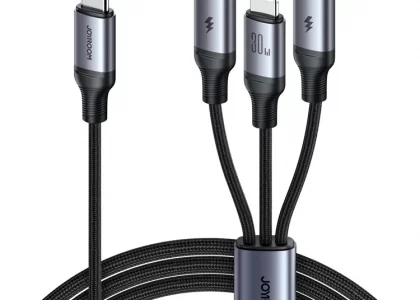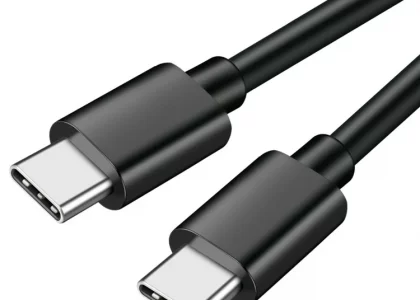In our increasingly connected world, having the right charging cables is essential for keeping all your devices powered up and ready to go. Whether you’re at home, at work, or on the move, a reliable charging solution is a must-have. Today, we’ll explore three popular types of cables: the 3-in-1 cable charger, the USB Type-C to A cable, and the Type C to Type C cable. Understanding the features and benefits of each can help you choose the best option for your needs.
1. 3-in-1 Cable Charger: Versatility at Its Best
A 3 in 1 cable charger is a versatile and convenient solution for those who have multiple devices with different charging ports. This type of cable typically combines three connectors in one: Lightning, Micro USB, and USB Type-C. Here’s why you might want to consider a 3-in-1 cable charger:
Multi-Device Compatibility: The 3-in-1 design makes it easy to charge various devices, such as iPhones, Android phones, tablets, and even some Bluetooth accessories, all with a single cable. This is especially useful if you have devices from different brands or if you often need to share a charger with others.
Convenience and Portability: Instead of carrying multiple cables, a 3-in-1 charger offers a compact and lightweight solution, perfect for travel or everyday use. With just one cable, you can reduce clutter and simplify your charging routine.
Cost-Effective: Purchasing a 3-in-1 cable charger can be more cost-effective than buying separate cables for each device. It offers a budget-friendly way to ensure you have the right connector for every situation.
2. USB Type-C to A Cable: Bridging the Gap
The USB Type-C to A cable is another popular option, especially useful for connecting newer devices with USB-C ports to older devices or chargers that have a standard USB-A port. Here’s why this cable is an essential addition to your collection:
Backward Compatibility: USB Type-C to A cables allow you to connect your modern USB-C devices, such as smartphones, tablets, or laptops, to older USB-A chargers, power banks, or computers. This ensures compatibility across different generations of devices and accessories.
High-Speed Data Transfer: Many USB Type-C to A cables support high-speed data transfer, making it easy to sync files, photos, and videos between your devices. This can save you time and improve productivity, particularly when dealing with large files.
Wide Availability: Since USB-A ports are still widely used, USB Type-C to A cables are incredibly versatile. They are commonly available and affordable, making them a convenient choice for everyday use.
3. Type C to Type C Cable: The Future-Proof Choice
The Type C cable to Type C represents the future of charging and data transfer. As more devices adopt USB-C as the standard port, having a reliable Type C to Type C cable is becoming increasingly important. Here’s why this cable is a great choice:
Fast Charging and Data Transfer: Type C to Type C cables are designed for high-speed charging and data transfer. Many support USB Power Delivery (PD), enabling fast charging for compatible devices like smartphones, tablets, laptops, and even some gaming consoles. They also support high-speed data transfer, making them ideal for transferring large files quickly.
Universal Compatibility: The Type C to Type C cable can connect two devices with USB-C ports, such as newer smartphones, tablets, laptops, and even some headphones and speakers. This universal compatibility simplifies your tech setup, reducing the need for multiple different cables.
Durable and Reversible Design: USB-C connectors are known for their durability and reversible design, which means you can plug them in any way without worrying about the orientation. This makes them more convenient and less prone to wear and tear compared to older connectors.
Conclusion
Whether you need a versatile 3-in-1 cable charger for multiple devices, a USB Type-C to A cable for compatibility with older chargers, or a Type C to Type C cable for fast charging and future-proof connectivity, each option has unique benefits. Understanding the features of these cables will help you choose the right one for your specific needs. Equip yourself with the right charging solutions and stay powered up wherever you go!






